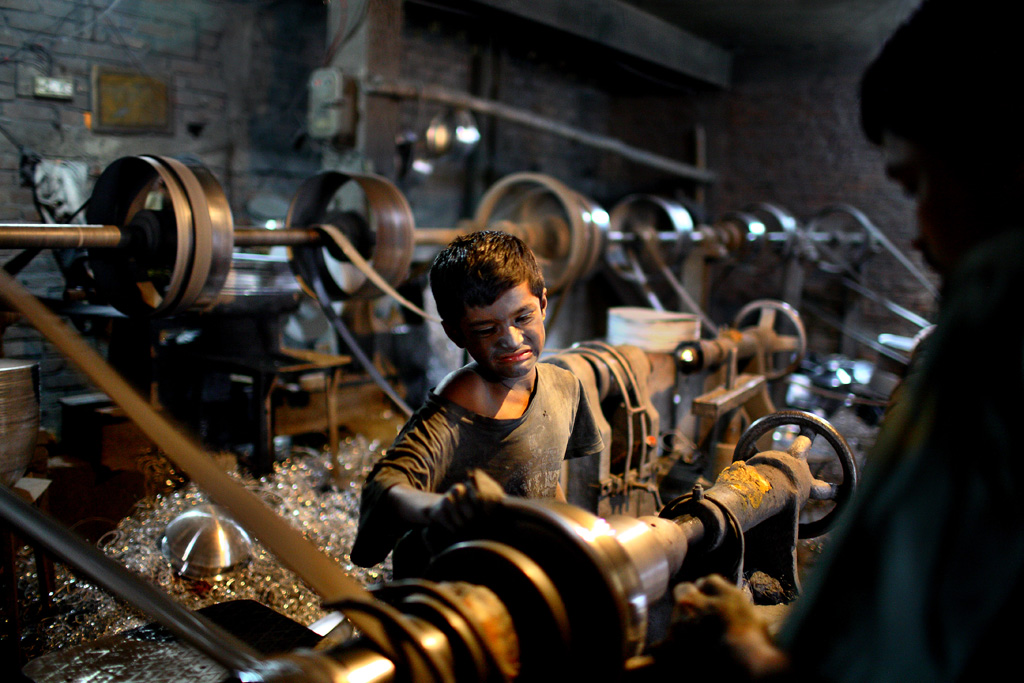Generation Safe&Healthy
World Day Against Child Labour
The International Labour Organization (ILO) launched the World Day Against Child Labour in 2002 to focus attention on the global extent of child labour and the action and efforts needed to eliminate it.
Each year on 12 June, the World Day brings together governments, employers and workers organizations, civil society, as well as millions of people from around the world to highlight the plight of child labourers and what can be done to help them.
SFGs
The Sustainable Development Goals (SDGs), adopted by world leaders in 2015, include a renewed global commitment to ending child labour. Specifically, target 8.7 of the Sustainable Development Goals calls on the global community to:
World DayAgainst Child labou
"Take immediate and effective measures to eradicate forced labour, end modern slavery and human trafficking and secure the prohibition and elimination of the worst forms of child labour, including recruitment and use of child soldiers, and by 2025 end child labour in all its forms."
Young women slavery
"There are 541 million young workers (15-24 years old) globally. They account for more than 15 per cent of the world’s labour force and suffer up to a 40 per cent higher rate of non-fatal occupational injuries than adult workers older than 25. They include 37 million 15-17 year olds in hazardous child labour."
This year, the World Day Against Child Labour (WDACL) and the World Day for Safety and Health at Work (SafeDay) shine a spotlight on the global need to improve the safety and health of young workers and end child labour.
This year, the World Day Against Child Labour (WDACL) and the World Day for Safety and Health at Work (SafeDay) shine a spotlight on the global need to improve the safety and health of young workers and end child labour.
Child slavery/ Haiti
The returns on the investment in ending child labour are incalculable. Children who are free from the burden of child labour are able to fully realize their rights to education, leisure, and healthy development, in turn providing the essential foundation for broader social and economic development, poverty eradication, and human rights.
"We must move much faster if we are to honour our commitment on ending child labour, and we need to do it together."
UN
credits: ILO
Education:
Schools and other educational institutions make a special effort to inform children of their rights according to the Declaration of the Rights of the Child and the Convention on the Rights of the Child.
Teachers and students worldwide are speaking out against child labour in the classroom and taking action to raise further awareness of this issue out school.
They are spreading knowledge among their peers, acting as a voice for those children whose rights are not respected and calling on decision-makers to act urgently to protect children in danger.
Child labour
credits: GMB Akash/ Bangladesh
ND Awards/ Angels in Hell
Teachers have a crucial role on the alert of poverty or child labour, modern slavery cases among their students.
Numerous resources can be included into school curricula to inform, inspire and motivate students of all ages, from primary school through university, on the subject of child labour, modern slavery and human trafficking.
Modern sexual slavery
Activities :
- Display photos, news, videos on the theme in the classroom and invite the students to express their feelings about;
- Explain younger students the symbolic of special days like this one.
- Ask students to make a search on child labour in their own country, comparing with other countries, using tablets or smartphones;
- Choose a wall in the classroom or another space in the school - school library is a good place - where students in a cross-curricular can display their depictions of child labour, modern slavery and human trafficking: works of art, photos, storytelling;
- Organize an exhibition of photos or drawings on child labour, modern slavery in the classroom, school library, other spaces at school;
- Ask students to set up information stands on the internet, social media (radio, television) or social networks (Twitter, Facebook, Instagram to raise school awareness on the issue;
- Prepare a play at the school library written by your students. Invite parents, teachers, the maire and students from another school;
- Present a film on this theme in the classroom or at the school library, and invite teachers, parents, and other students to a Round Table discussion;
- Students can prepare brochures, flyers to hand out to other students, teachers and school community;
- Make a film on YouTube (students are often Youtubers) joining authentic documents (photos) and texts written by the students.
On the website ILO you will have some good material and you can find activities from all around the world.
- Some thoughts:
Of course World Day Against Child's Labour is not for a lesson. As a teacher you will prepare the activity for 3-4 days, a week (it will depend on the activities you intend to develop and the level you are teaching).
And what about the teacher role? We will facilitate the activities in the classroom. Teachers will organize the activities asking the collaboration of the students.
Since the role of the teacher has changed, more as a tutor or facilitator than a deliverer of content, you and I have the privilege of observe how students interact among classmates.
We will answer to questions, guide students with special needs, work with small groups, guiding the learning of the class and each student individually.
Teachers have time to roam around the class, noticing that students are developing their own collaborative work.
It is magical to observe that ! And at the end you will have creative activities elaborated by the students.
When we interact with our students this way, they usually correspond to teachers expectations. They realize - it takes time - that we are there to guide them in their learning instead of being a classical educator.
Our students will participate actively in the World Day Against Child Labour for sure, and they will become engaged young citizens.
They will understand how lucky they are to come to school every day.
“Children are more vulnerable to risk than adults. Urgent action is needed to ensure no child under the age of 18 is in hazardous child labour,”
Guy Ryder, ILO Director-General
G-Souto
12.06.2018
12.06.2018
Copyright © 2018G-Souto'sBlog, gsouto-digitalteacher.blogspot.com®

Schools : World Day Against Child Labour : Generation Save&Heatlhy ! G-Souto is licensed under a Creative Commons Attribution-NonCommercial-NoDerivatives 4.0 International License









No comments:
Post a Comment